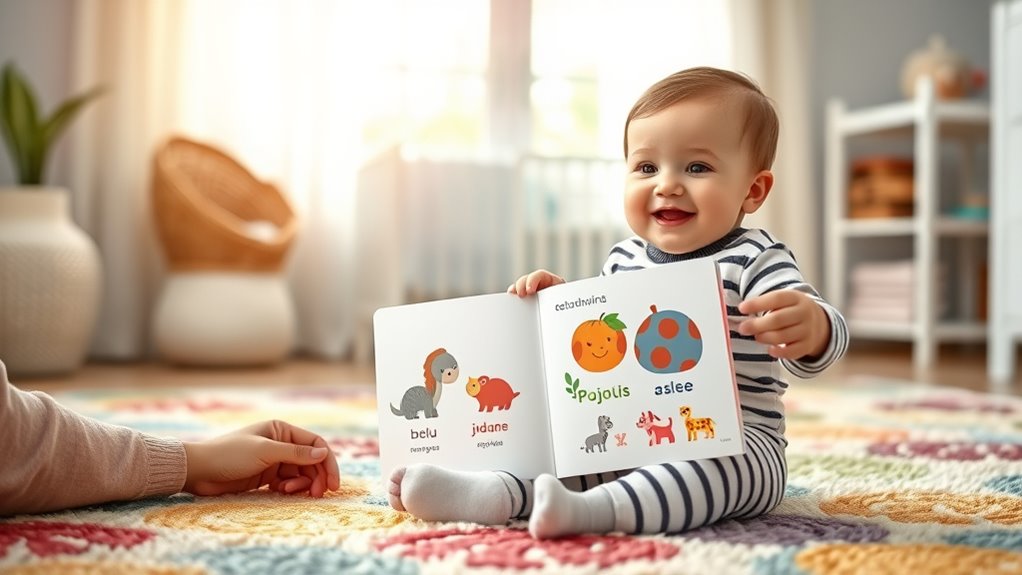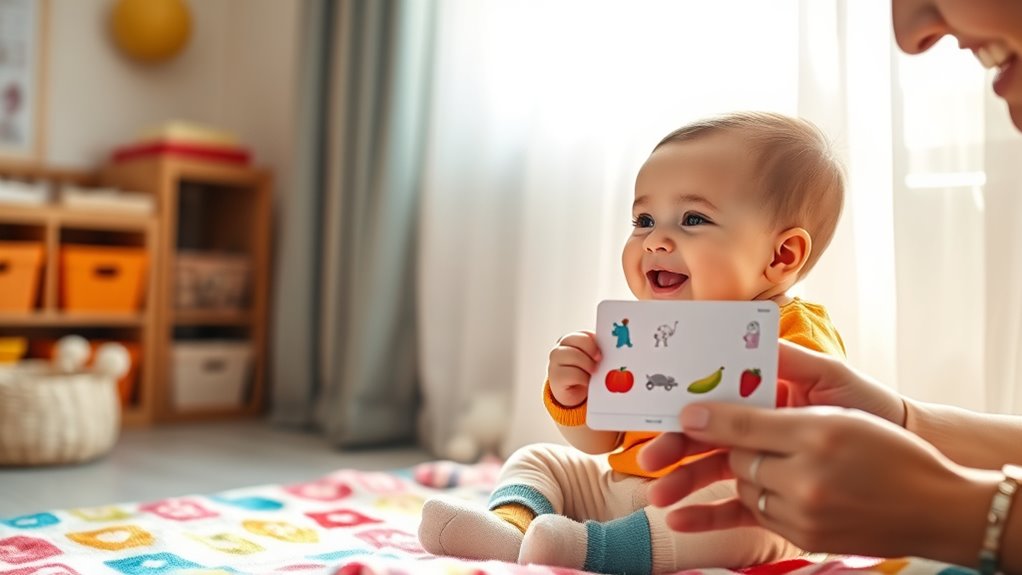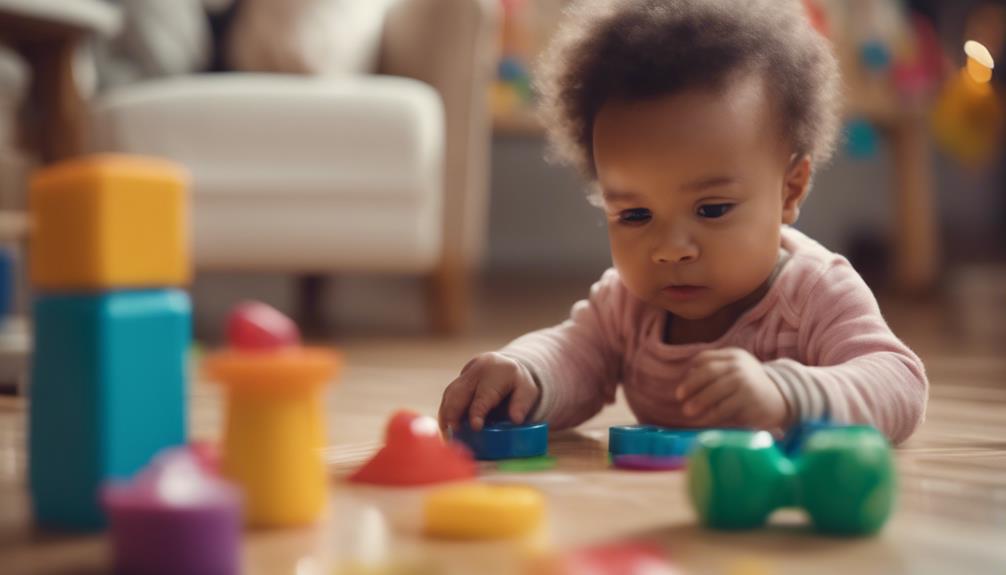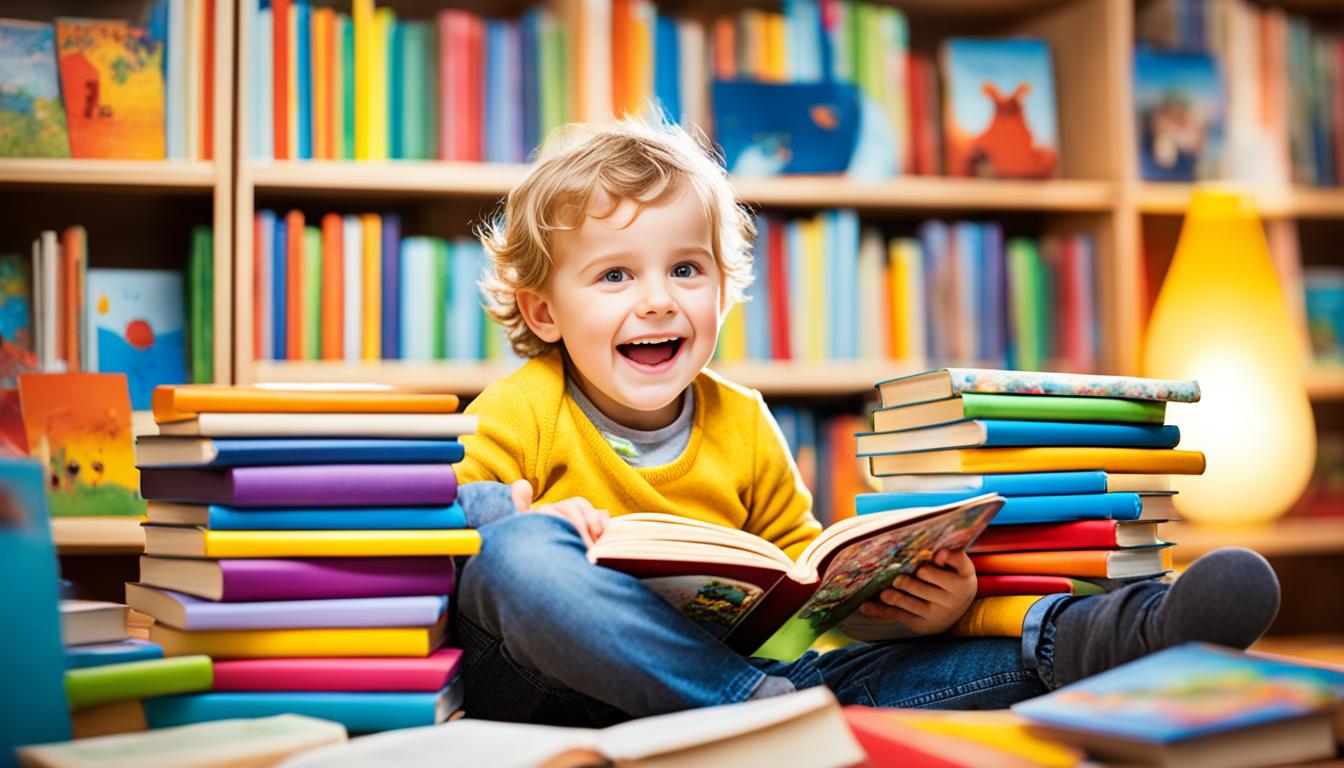To teach your baby two languages from birth, consistently expose them to both through daily activities like reading, singing, and conversations. Use clear cues to differentiate each language and encourage natural code switching to build their confidence. Keep the environment comfortable and avoid pressuring them for perfect fluency. Focus on balanced interactions, celebrate progress, and be patient. The more you practice and engage, the stronger their bilingual skills will become—continue to explore ways to support their growth.
Key Takeaways
- Start early by consistently speaking both languages at home to build a strong bilingual foundation.
- Use contextual cues like objects, gestures, or settings to help your child switch between languages naturally.
- Incorporate diverse activities such as reading, singing, and conversation in both languages to promote balanced exposure.
- Be patient and celebrate progress, understanding language development varies and takes time.
- Avoid pressure; create a supportive environment that encourages exploration and confidence in both languages.

Introducing your baby to two languages early on can boost their cognitive development and cultural awareness. When you start exposing your little one to multiple languages from birth, you’re giving them a head start in communication skills, problem-solving, and adaptability. One important aspect to contemplate is how your child’s brain will navigate these two languages, often involving phenomena like code switching and language dominance. Understanding these concepts can help you support your child’s bilingual journey effectively.
Code switching is a natural part of bilingual development. It happens when your child seamlessly shifts between languages within a conversation or even a sentence. For example, they might say, “I want to eat la pizza,” mixing English and their second language. This behavior isn’t a sign of confusion or difficulty but rather an indication that their brain is learning to navigate both languages flexibly. It shows they’re developing a rich linguistic repertoire and understanding the contextual cues that determine which language to use. Encouraging this flexibility can foster confidence and linguistic competence, as your child learns that language boundaries are fluid and adaptable.
At the same time, you might notice that your child begins to favor one language over the other, leading to what is called language dominance. Usually, this occurs because one language is used more frequently at home or in social settings, becoming their stronger or more comfortable language. While some degree of language dominance is natural, it’s crucial to make certain your child maintains proficiency in both languages. To do this, provide balanced exposure—reading books, singing songs, and engaging in conversations in both languages regularly. This balanced approach helps prevent one language from overshadowing the other and supports your child’s ability to switch seamlessly between them.
Supporting your child’s bilingual development also involves being mindful of their individual pace. Each child develops language skills at their own rate, so patience is key. Celebrate their successes in both languages, and avoid pressuring them to speak perfectly. Instead, create an environment where they feel comfortable experimenting with both languages, making mistakes, and learning from them. Remember, their ability to navigate code switching confidently and manage language dominance will strengthen over time with consistent practice and encouragement. Additionally, incorporating language exposure through various activities can significantly enhance their bilingual proficiency.
Frequently Asked Questions
When Is the Best Time to Start Bilingual Exposure for My Baby?
You should start exposing your baby to bilingual language as early as possible, ideally from birth, to support their language milestones. Early exposure allows you to incorporate age-appropriate activities that foster natural learning. By doing so, you help your little one develop strong communication skills in both languages. The sooner you begin, the more seamlessly bilingualism becomes part of their daily routine, making language learning enjoyable and effective.
How Can I Prevent Language Confusion in My Bilingual Child?
To prevent language confusion in your bilingual child, focus on fostering clear language separation. Encourage consistent use of each language with specific people or contexts, which helps reduce code switching. Avoid mixing languages within the same sentence, and provide ample exposure to each language through conversations, books, and media. This approach helps your child develop strong, distinct language skills and minimizes confusion as they grow.
Should I Use One Parent Speaking One Language or Both Languages at Home?
Ever wondered if mixing languages confuses your child? The answer lies in your approach. Using one parent speaking one language and the other speaking the second creates language consistency, helping your child distinguish between them. Alternatively, you can embrace code switching strategies, mixing them naturally to develop fluency without confusion. Either way, consistency and intentionality are key to nurturing your bilingual child’s language skills confidently.
How Do I Support a Child’s Language Development if They Fall Behind?
If your child falls behind in language development, stay proactive. You can support their progress by engaging in regular conversations, reading aloud, and encouraging play that promotes communication. If concerns persist, consider speech therapy, which can help meet important language milestones. Early intervention is key, so seek professional advice promptly to tailor strategies that boost your child’s confidence and language skills effectively.
Are There Any Cultural Considerations When Raising a Bilingual Baby?
Thinking about cultural considerations when raising a bilingual baby, you’re on a journey that’s as important as it is rewarding! You help shape their cultural identity and preserve language traditions that could vanish like magic. Embrace the cultural nuances, celebrate heritage, and encourage your child to connect with both worlds. By doing so, you create a rich, vibrant foundation that nurtures pride, belonging, and a deep love for their diverse roots.
Conclusion
Starting your child on a bilingual journey from birth can open doors to a world of opportunities. By consistently speaking both languages and creating immersive experiences, you set the stage for a confident, culturally aware little one. Imagine how their eyes will light up when they effortlessly switch between languages, connecting with different worlds. Isn’t it amazing to think you’re shaping a lifelong bridge between cultures, all from the very beginning? The future is yours to nurture—embrace it.









